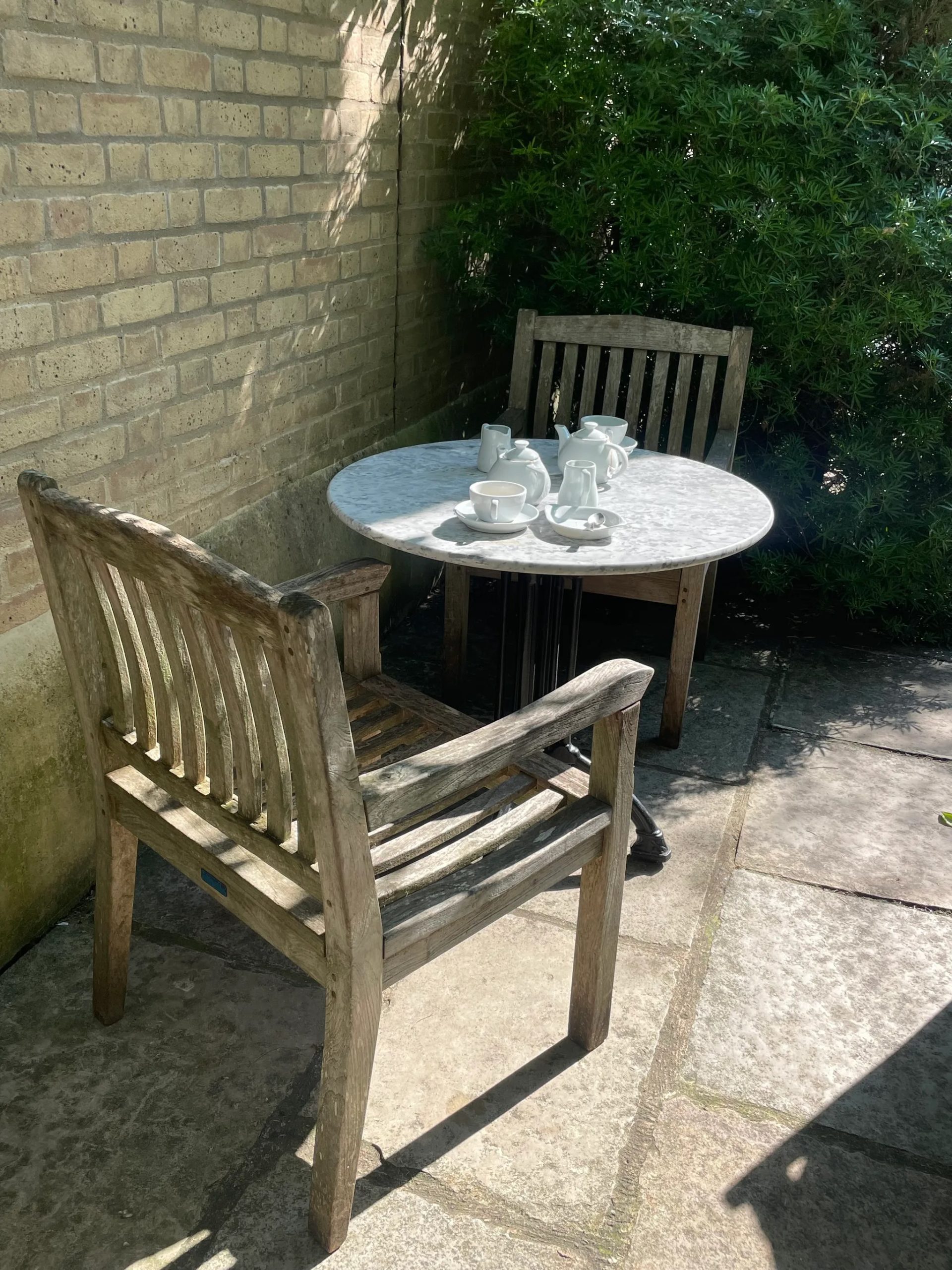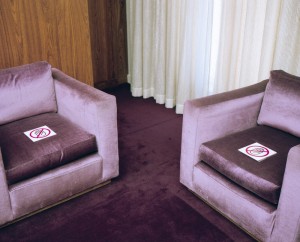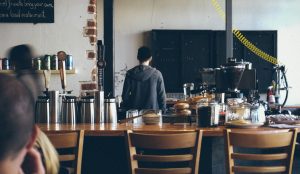Brewing communities: inside Oxford’s café culture
by Clara Brownstein | October 5, 2024

At Jericho Coffee Traders, postcards from customers cover the wall behind the cash, and graduates have their photos taken in front of the café. There’s even a regular who gets behind the counter and starts working when the line gets too long. At The Missing Bean, a professor gets a takeaway coffee each day, bringing the café’s mug to her office and back, cyclically. At Gulp Fiction, owner Oliver Mason sees “the same faces every single day.”
Oxford’s cafés have devotees, pockets of regulars who chose their shop and stay loyal. But behind each coffee shop, with its cultivated subset of customers, exists a £5.3 billion industry that has ballooned over the past 20 years. Coffee houses have been gathering places ever since coffee first reached Europe in the sixteenth century, and Oxford’s cafés have their own particular history of intellectual ferment. But cafés are also a big business—even the small ones. In April, London-based consultancy Allegra World Coffee Portal reported that growth of so-called “second wave” national chains like Costa and Caffè Nero was slowing, while “boutique” “fifth wave” cafés were beginning to displace the artisanal values and exacting science that characterised the third and fourth waves. This fifth wave (coffee somehow claiming more waves than feminism) is known for promoting the “business of coffee” through personal customer-centred service and inviting décor. When cultivating individuality is part of an implicit marketing plan, independent cafés and their customers face an identity crisis—caught between the tradition of social coffee houses and the productivity- and profit-driven model espoused by laptop dependency and endless caffeine “waves”. In the age of work from home and £5 lattes, what purpose do Oxford’s cafés serve today?
When cafés first spread to Europe from the Middle East, they were not only centres for social mixing, but for political debate. The first British coffeehouse was, unsurprisingly, established in Oxford in 1650. Coffeehouses were dubbed “penny universities” because patrons could read newspapers and discuss the latest political ideas for the price of a cup of coffee (just pence, at the time). It wasn’t long before King Charles II tried to impose a ban.
From Michael Pollan’s Caffeine to Mark Pendergrast’s Uncommon Ground, scholars have argued that coffee and coffeehouses played a key role in the Enlightenment, and later in the success of the Industrial Revolution. Coffee has been surprisingly central to economic success and class mobility, whether by enabling working-class labourers to put in longer hours and hammer out more products or by allowing non-elite intellectuals access to exchanges of ideas at “penny universities”.
Gulp Fiction’s Mason argues that cafés have a middle class reputation—serving people who have some disposable time and money, but not necessarily enough to belong to elite clubs or other private institutions. “If you look at the working class intelligentsia movements, a lot of them are going to be working in pubs, they’re not going to be meeting in cafés,’ he said. “Cafés are for the middle class, essentially. It’s a bourgeois culture. Whereas, you know, if you’re having a workers’ meeting it’s going to be at a working men’s club. Traditionally they’re in places that serve alcohol and not coffee.”
Yet, as of last year, pubs are declining and cafés are growing—likely another pandemic-linked phenomenon. Instead of taking pubs’ place, many of today’s fifth wave cafés operate as workspaces, reanimating the Industrial Revolution’s “work, work, work” attitude to caffeine. Still, Oxford hasn’t completely left behind the Enlightenment ideal of the coffee house as a common space in which to develop ideas.
Coffee shops are “very much Oxford’s third place”, according to Missing Bean barista Katie Schoefield. Schoefield refers to a term popularised by sociologist Ray Oldenburg, meaning a space in which people can congregate outside of work or home. Especially now—with rising rents leading to more cramped housing options and post-pandemic work-from-home culture creating fewer discrete office spaces—it can be easy for lines to blur, and for cafés to pick up the slack.
Places like Common Ground on Little Clarendon Street embrace the new café culture, but with a collectivist twist. Established in 2019 as a co-working space, Common Ground now also offers a variety of nighttime entertainment, in addition to selling clothes, records, and books. Longtime Common Ground barista Franky Newton doesn’t shy away from the complexities of café culture after the pandemic. “We have a lot of people that work from home that don’t get that social interaction that they would if they were in a workplace,” she said. “We have a lot of people that come in seeking that daily interaction.” The café’s design exemplifies its atmosphere. The lack of dividing walls and a couple of long tables incentivise multiple customers to sit together, forcing a sense of community that can be lacking in the individual booths of restaurants or pub gardens (such as Jericho and Turf Taverns, to name a few).
Queen’s Lane Coffee House, which advertises itself as “the longest established coffeehouse in Europe”, used to have a similar large table in its centre. Owner Aylin Muldur, who has been working at the establishment since she was a teenager, regrets getting rid of the table when she expanded the café. The table was part of “the character of the shop” and reflected a traditional coffeehouse structure, more similar to Turkey, where coffeehouses have low tables at which patrons sit on the floor.
Many cafés try to strike a balance of sociability and work. Most establishments in the city centre, like The Missing Bean, New Ground, and Society, have some sort of laptop regulations. New Ground (not to be confused with Common Ground) has small placards on each table strongly discouraging laptop use on weekends and after 5 pm. New Ground barista Alfie Moffitt says the rules were put in place for two reasons: to improve the atmosphere and to increase the profits. According to Moffitt, the café noticed significantly decreased profits during laptop hours, when customers can set up and work at a table for a virtually unlimited amount of time. Common Ground, of course, has a different philosophy. “Making as much money as we possibly can is not the goal. At the end of the day we want a workspace where university students and people who work from home can come together,” Newton said.
Clearly, different cafés have different goals—from productivity to sociability to intellectual discussion.
At Gulp Fiction, Mason doesn’t care as much about space as he does about feeling. “I don’t like people to sit here and do work all the time mainly because it does take some soul out of it…” Instead, Mason wants “people to come here and meet their friends and chat. If someone’s chatting I want them to stay for hours and hours, I have no problem with taking up the space, it’s more like the energy that’s brought. It is an issue, it’s definitely an issue.”
Mason added that he doesn’t see the “penny university” description as accurate—at least not anymore. “You’re way more likely to see an exchange of ideas in a pub,” he said. “It happens sometimes where I see people, like, discuss things. But now people mostly see cafés as places to get out their laptops and work.”
Aside from just encouraging their customers to do so, baristas and café workers also enjoy socialising on the job. Matt Cowell at Mostro Coffee on Cowley Road said he sometimes feels a bit like a “vending machine”, when interactions with customers are “transactional”, so he enjoys conversing while working. Moffitt, who worked at 101 Coffee in Jericho before moving to New Ground, said that during the pandemic interactions at 101’s takeaway window became customers’ “only social outlet”.
While the atmosphere, the profits, and the work environment are all key factors in Oxford’s cafés—where does that leave the coffee itself?
Missing Bean barista Charlie Broughton likened coffee’s meteoric rise to beer in recent years, noting that people “very much buy into the ‘craft’ aspect.” Most Oxford cafés follow an Australian model, offering flat whites, specialty beans, and latte art. Jericho Coffee Traders, for example, runs a latte art school, while New Ground offers coffee tastings. Looking at the “waves” of coffee, it’s clear that Broughton is right. Long past Starbucks’s industrial brews, the third, fourth, and fifth waves all focus on quality and artisanry, now essentially prerequisites for any successful coffee shop.
While Oxford’s cafés are trying, and mostly succeeding, at creating community and unique providing spaces to think and write, coffee is ultimately still a business. Several shops are making the most of coffee’s steady rise—and of customers’ reliance on it. Gulp Fiction sells coffee and books; 101 Coffee combines its café with an upstairs barbershop; Mostro Coffee is a part of the Truck Shop record store.
“The idea of having a coffee shop ancillary to whatever you’re doing means that you have this extra revenue stream that everyone’s addicted to, to be quite honest with you,” Mason noted. “If you’re going to look at why people do it it’s simply because people are addicted to coffee… When we boil it down, we have coffee to get through the day—and this is why I like tea more.” ∎
Words by Clara Brownstein. Image courtesy of Clara Brownstein.




